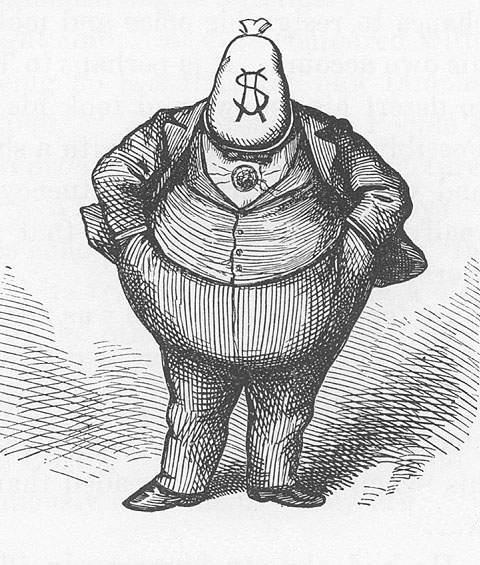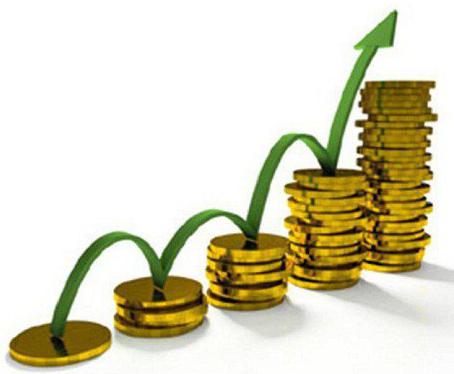The market economy with its mechanisms for regulating free competition and entrepreneurship has greatly contributed to the formation of the picture of the world that we have today. The advantages of this type of system are undeniable, but this was not always the case. Moreover, until now, some sectors of the economy of different countries have a monopolistic basis. This is the only possible option for their effective functioning. So what is monopoly? What is its essence?
We reveal the concept
Monopoly is a market situation when a large enterprise or their association, which is engaged in the production and sale of unique products, dominates the industry. Such an entity is protected from competition. He is the only representative of the market producing a certain product.
Since the monopolistic enterprise is in privileged conditions of existence and is the only source of supply, there is no need to fear for the size of demand. This gives him the opportunity to independently determine prices and carry out planning of production processes for qualitative and quantitative characteristics. Thus, monopolization is the capture of the entire market or its larger share by one large company.

In modern legislation, such activity is defined as the abuse by an economic entity of its position against the economy and existing laws.
Characteristics of a monopolized market
Among them are the following:
- The presence of only one seller.
- A product or technology is unique and indispensable. Therefore, buyers have no choice.
- There are insurmountable barriers to entering the market of competitors.
- The company dictates its price to the market.
- Legal When a monopoly is purposefully created by the state, it is under its total control. And in order to avoid competition at the legislative level, a ban on the entry of similar enterprises into a specific industry is announced.
- Natural. Barriers to entry of competitors are formed by themselves. For example, utilities are regulated by the state, and for completely natural reasons competition is not allowed here.
- Economic. This type of barriers in the market is organized by the monopolist himself or they appear due to the political or economic situation in the country.
Types of barriers to entry into a monopolistic market
The reasons for the emergence of monopolies:
- There are a number of sectors of the economy that are best managed by one company or the state. These sectors include: energy supply, gas and water supply, pipeline transport, post office, railway transport, subway, etc. The economies of scale in the absence of competition make the monopoly in these sectors financially sound.
- Owning a unique resource or technology. Monopolization is a temporary phenomenon until competitors catch up with the company that has advanced ahead.
- Reduced need for a product. A low level of demand also leads to the formation of a natural monopoly, since everyone understands the inappropriateness of creating competition in connection with low demand.
- Association of the largest companies in the industry. Firms may voluntarily join together to eliminate competitors. A forced merger or even takeover may also occur when a more successful company buys a smaller or more profitable competitor.
Classification
Monopolization is a multifaceted complex phenomenon, therefore, many of its types are distinguished, depending on what to take as a basis. The most common classification criteria are as follows.
By ownership, the types of monopolies are:
- state;
- private.
By the nature and cause of occurrence:
- Natural. Due to the limited resources or characteristics of the production of goods, it is economically more profitable and efficient to create a monopoly.
 For example, natural resources such as oil and gas are managed exclusively by the state.
For example, natural resources such as oil and gas are managed exclusively by the state.
- Artificial. This type of monopoly arises in the event of a business combination or in the absence of competitors.
- Temporary, when the company is a temporary monopolist as long as it has a unique product or technology and has no competitors. This provision will continue until other enterprises begin to produce a similar product.
- Legal. Allowed by the state. Protected from competition by the legal field.
According to the level of state regulation:
- Indirectly controlled. They are created by business entities and are under state supervision.
- Directly adjustable. Monopolies are created and ordered by the will of the state in the public interest.
By territorial nature: local, regional, national and transnational.
Types of monopolies - a whole section in economic theory. In connection with the versatility, there is also a separation in forms. Consider their varieties.
Forms of Monopolies
The simplest is the cartel, as each of the participants retains economic independence. The main point is to exchange information and conclude an agreement on prices and the division of markets.
Syndicate - a combination of several companies from one industry, as a result of which each of them retains control over its own production capacities, but commercial activities are carried out by agreement of the parties. As a rule, a general sales department is created to simplify operation.

A trust is an association of several companies representing one or several sectors of the economy. There is a merger of production, marketing and financial management. In accordance with the percentage contribution of each organization to a common cause, the distribution of shares, and subsequently, the profit, occurs.
Concern - an association of companies from various industries based on diversification. The legal independence of the participants is maintained, while a single financial center is created. This increases the potential for the development of production.
Conglomerate - a merger or takeover of diversified companies for the purpose of unified financial control. Enterprises may be located in completely unrelated industries. The main goal of this is diversification.
Assessment of the degree of market monopolization
It depends on the prevalence of one or another type of relationship in the economy. In order to assess the level of monopolization and competition, there are:
- The market is a pure struggle. This is a situation where there are many companies with diverse products on a scale mass production. Moreover, there are practically no barriers to the entry of new participants in economic relations.
- The market of monopolistic competition. There are many sellers in the industry with interchangeable differentiated products, so there is a risk that, with inadequate overpricing, the buyer may go to a cheaper competitor. This is the most common type. market structure to date. This may include manufacturers of well-known brands of sportswear cosmetic brands etc.

- Oligopoly. This type of market structure occurs when the number of companies producing similar and interchangeable goods does not exceed five. Barriers to entry are very high.Therefore, often, but not always, there is consistency between competitors. In this case, they can agree to divide the market among themselves. Examples are aircraft manufacturing and automotive companies.
- Monopoly. In this case, there is no competition, this is the exact opposite of the first type of market device.
Monopolization Indicators
One of them is the number of manufacturers producing a particular product, and their division into groups depending on size and specialization. To assess the level of monopolization, they also look at the volume of market share by producers.

Other indicators:
- Determining what proportion of the total market volume falls on small, medium and large enterprises.
- The Hirschman-Herfindel index as the main coefficient of monopolization is expressed as the sum of the squares of the shares of companies in percent. The market is not captured when the indicator is below 1800. In this case, the possibility of mergers and acquisitions of companies is allowed. If this ratio is between 1800 and 2500, then there is a certain risk that a large enterprise will capture too much market share, which will allow it to dictate its rules to the remaining competitors and customers. In this case, the consent of the state is required for the combination of companies. If the index indicator turns out to be more than 2500, then any enlargement of the enterprise through absorption or merger is prohibited.
Positive aspects: there are a number of sectors of the economy where competition is unacceptable. The presence of a monopoly in these areas contributes to the rational allocation of resources and savings due to the factor of mass production and cost reduction. Control over natural resources, high-tech and military developments, utilities, and enterprises with a unique focus should never be left to private hands. The most effective will be the management of one company.
The main negative consequences of monopolization are related to the lack of competition. This leads to a long list of negative factors affecting the development of the country's economy.
Consequence of monopolization
- Over pricing.
- Inefficient allocation of resources.
- Lack of incentives for updating production capacities and introducing new technologies.
- Decreased production efficiency.
- Risk for an efficiently functioning sector of the economy.
Monopoly regulation
The state tirelessly monitors the state of the market. It strikes a balance between competition and monopolization. Otherwise, an excessive increase in the number of dominant companies may impair the functioning of the entire industry. Like any other component of the economy, the activities of monopolies are controlled by a specialized authority.  Its main goals are:
Its main goals are:
- Price regulation.
- Creating and maintaining healthy competition.
- Ensuring economic freedom to all economic entities of the market.
- The formation and maintenance of the unity of the economic space.
Thus, competition and monopolization are two radically different concepts, a counterweight to each other. However, both have a dual characteristic, which implies the presence of data market structures both positive and negative sides. Competition is necessary for the progressive development of all sectors of the economy. However, as the practice of most states shows, monopolistic structures cannot be dispensed with either.
Monopolization is an economically sound phenomenon in certain market sectors. But without its regulation, a negative influence on the development of the industry is possible. That is why antitrust laws have been developed that allow you to keep the situation under control and maintain a balance between these two types of economic relations.







